Key takeaways:
- Participant safety is foundational for ethical research, requiring strong safety protocols and empathetic engagement with participants.
- Compliance with regulations like the Declaration of Helsinki enhances trust and transparency, fostering open communication about participant welfare.
- Effective risk assessment involves early identification of hazards, prioritizing responses, and implementing training strategies for staff to manage potential crises.
- The informed consent process should be ongoing, using clear language and maintaining a dialogue to empower participants and ensure their understanding throughout the study.
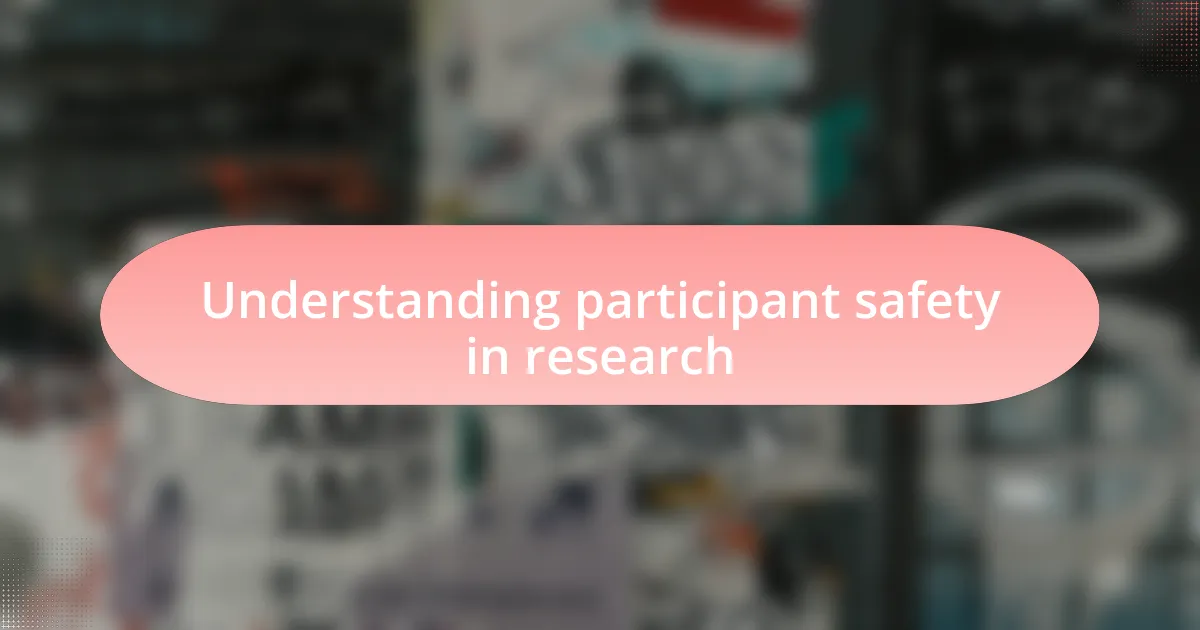
Understanding participant safety in research
Participant safety in research is crucial, as it lays the foundation for ethical and credible studies. I often reflect on my early days in research, where I witnessed first-hand the intense focus on safety protocols. It struck me how a single oversight could alter the course of a participant’s well-being, making the responsibility of researchers deeply personal.
When I think about safety measures, I can’t help but remember a time when we implemented stringent monitoring during a clinical trial. We had a dedicated team ready to address any adverse effects immediately. This experience solidified my belief that safety isn’t just about minimizing risk; it’s about cultivating trust. Isn’t it essential for participants to feel secure and valued when contributing to research that may help others?
Moreover, ensuring participant safety goes beyond compliance with regulations. It requires a genuine commitment to listening and responding to participants’ concerns. During a focus group I led, participants openly shared their fears and hesitations, which prompted me to rethink our approach entirely. Their insights were invaluable, highlighting how a researcher’s empathetic engagement can enrich the study and safeguard participant welfare.
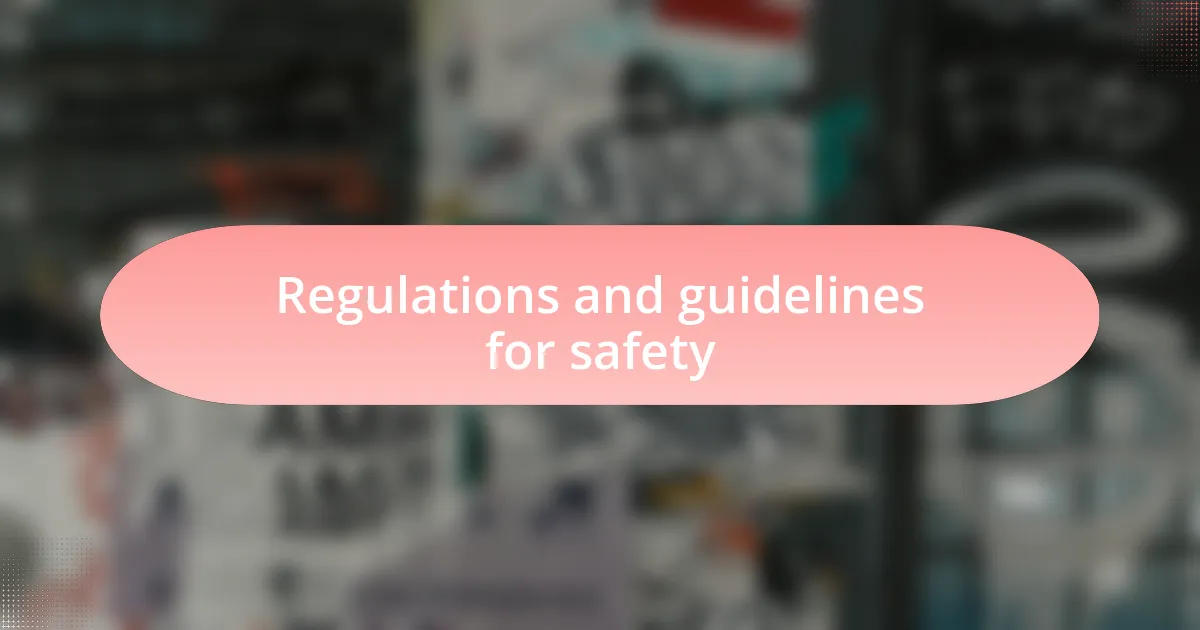
Regulations and guidelines for safety
Regulations and guidelines for safety are the cornerstones of responsible medical research. I still remember the first time I navigated the regulatory landscape for a clinical study. While it felt overwhelming, the clarity they brought to participant safety reassured me that we were on the right path. Knowing that these frameworks, like the Declaration of Helsinki or Good Clinical Practice (GCP), exist to protect individuals made the entire process feel more purposeful.
Adhering to these regulations is not just about following orders; it’s about fostering an environment of trust and transparency. During one trial I managed, I noticed how our meticulous documentation of safety procedures built confidence among participants. They frequently remarked on our openness, which led to candid conversations about any discomfort they experienced. It’s amazing how the structured guidelines allowed us to connect on a deeper level, ultimately enhancing their commitment to the study.
I also find that staying updated with evolving regulations is essential for researchers. I vividly recall a workshop where we discussed updates in ethical guidelines, sparking a lively debate about the balance between innovation and participant protection. Isn’t it crucial for researchers to reflect on these changes continuously? Being proactive in understanding these regulations not only safeguards our participants but also fosters a culture of continuous improvement—something every research team can strive for.
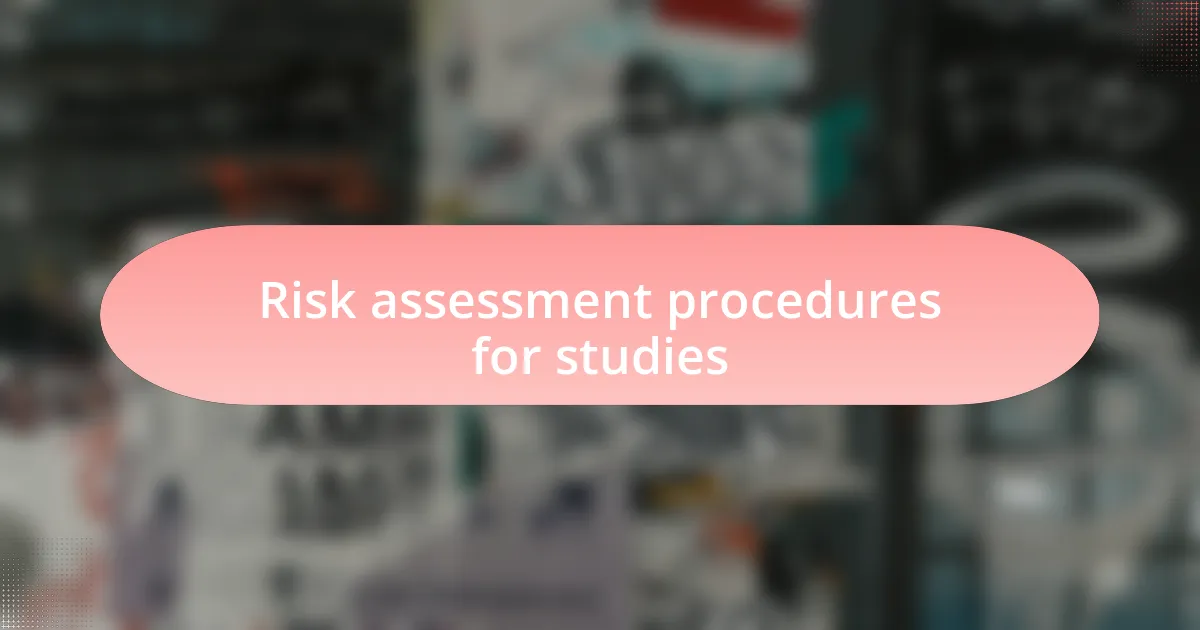
Risk assessment procedures for studies
An essential aspect of risk assessment procedures is identifying potential hazards early on. I remember sitting down with my team to analyze possible risks for a new trial, and it was fascinating to see how brainstorming together led to uncovering issues we initially overlooked. Engaging the entire team in this process not only shaped a thorough risk evaluation but also strengthened our collective commitment to participant safety. How often do we pause to consider the unseen risks that could affect our participants?
Once risks are identified, categorizing them based on their severity and likelihood becomes crucial. In a previous study, we assigned a numerical value to each risk, which enabled us to prioritize our responses effectively. The realization that some risks required immediate action, while others could be monitored over time, truly helped in creating a structured response plan. Isn’t it empowering to know that a systematic approach can transform chaos into clarity for everyone involved?
After assessing and categorizing risks, I’ve learned the importance of implementing strategies to mitigate them. During one particular project, we developed a comprehensive training program for our staff, focusing on how to handle emergencies. Watching the team gain confidence and feel equipped to act swiftly if a situation arose was incredibly rewarding. Doesn’t it resonate with you how preparation can turn potential crises into manageable challenges?
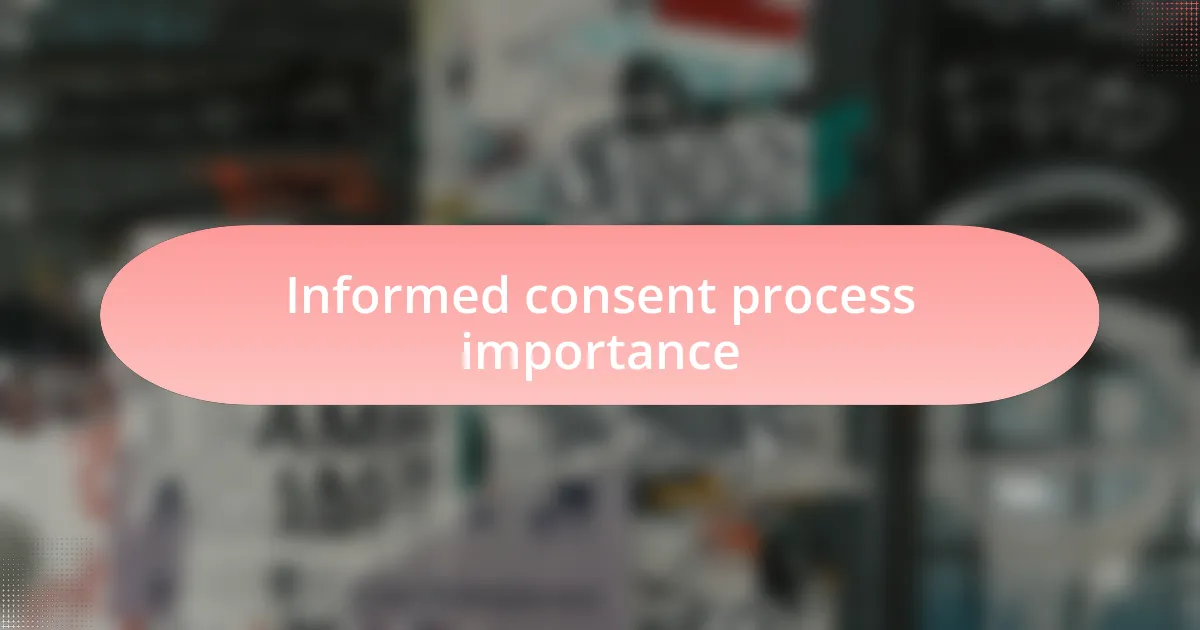
Informed consent process importance
The informed consent process is absolutely vital in ensuring that participants fully understand what they’re agreeing to when they enroll in a study. I recall a particularly enlightening discussion with a research ethics committee where we explored the nuances of consent forms. The committee highlighted how using clear language makes a profound difference; it’s not just about legal compliance, it’s about building trust. Have you ever stopped to think about the weight of those signatures?
Consider this: when participants grasp the risks and benefits clearly, they feel empowered to make informed choices. I vividly remember a participant who expressed relief after we simplified the informed consent document. She felt more comfortable asking questions and ultimately became an advocate for transparency in our trials. Isn’t it incredible how a clear understanding can transform someone’s experience from apprehensive to enthusiastic?
Moreover, the ongoing conversation during the informed consent process is crucial. In a past study, I found that checking in with participants throughout their involvement helped reinforce their understanding and comfort levels. This dialogue not only respects their autonomy but also fosters a sense of partnership. How often do we engage participants beyond just that initial consent? It’s this continuous connection that truly prioritizes their safety and well-being.

Training and resources for researchers
The training of researchers is a cornerstone of participant safety in medical studies. I distinctly remember attending a workshop focused on ethical research practices. The trainers emphasized the importance of recognizing potential risks and how to mitigate them, which really struck a chord with me. Have you ever considered how a single piece of training could change a researcher’s approach to participant care?
Equipping researchers with the right resources is equally vital. For instance, I once stumbled upon a comprehensive online platform that offered webinars on managing adverse events. These resources not only helped me identify situations to watch for but also provided strategies to communicate effectively with participants. It made me question: how many researchers are aware of such valuable tools at their fingertips?
Peer support and mentorship also play a critical role in developing a safety-minded research culture. I’ve found that informal discussions with seasoned colleagues often reveal best practices that formal training might overlook. Reflecting on my own experiences, I realize that these conversations can significantly contribute to a researcher’s confidence in ensuring participant safety. How often do we turn to our peers for insights, rather than relying solely on structured training?
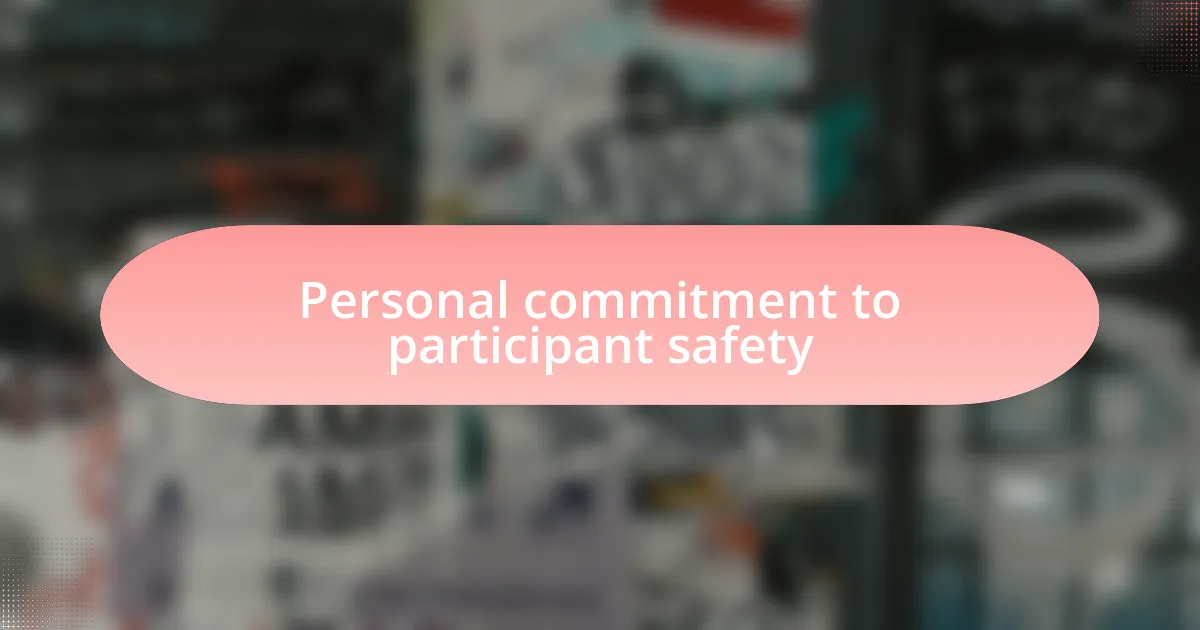
Personal commitment to participant safety
My commitment to participant safety is rooted in a deep personal responsibility that I feel whenever I embark on a research project. I vividly recall a moment during a previous study when I noticed a participant showing signs of discomfort. Instead of pushing through protocol, I chose to pause and reassess the situation, which ultimately led to an important adjustment in our approach. Have you ever felt that instinct to prioritize someone’s well-being over strict adherence to guidelines?
I believe that actively fostering a culture of safety extends beyond just following protocols; it’s about truly listening to participants. During one of my studies, I initiated feedback sessions where participants could share their concerns freely. The insights I gained were invaluable, and they reshaped how I viewed consent. Isn’t it remarkable how open communication can not only enhance trust but also empower participants in their own care journey?
Moreover, my dedication to participant safety drives me to continuously educate myself on emerging ethical practices and safety measures. Recently, I took an online course focusing on the nuances of informed consent in vulnerable populations. The course pushed me to reflect on how important it is to adjust my language to ensure that every participant feels fully informed. Isn’t it fascinating how lifelong learning can deepen our commitment to safeguarding those who entrust us with their health?